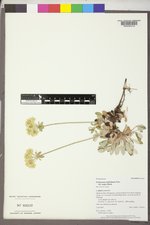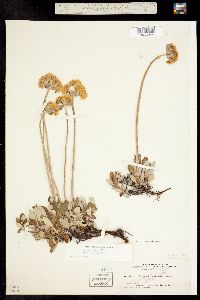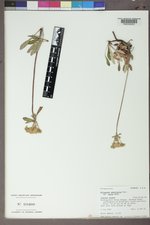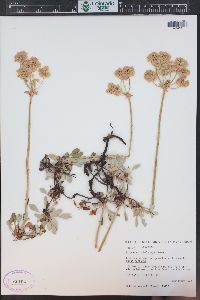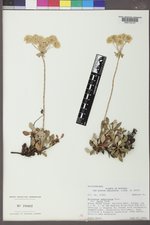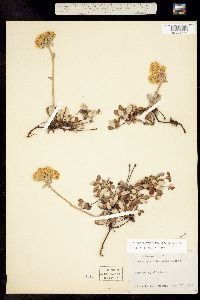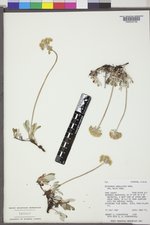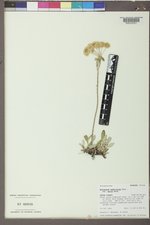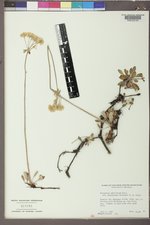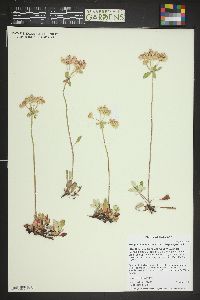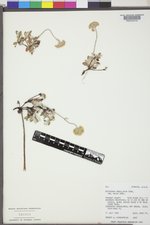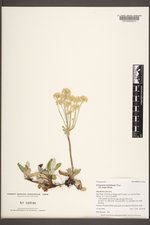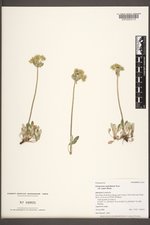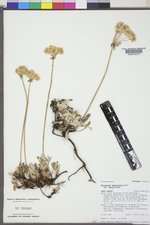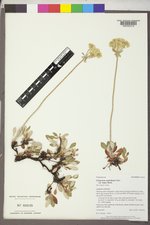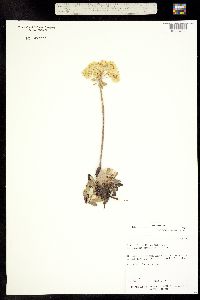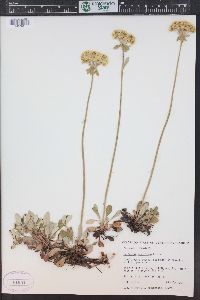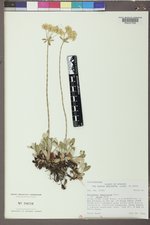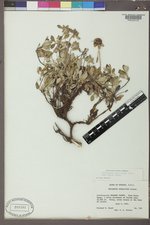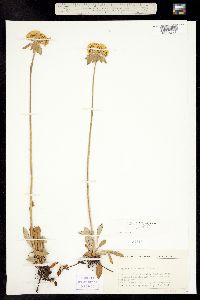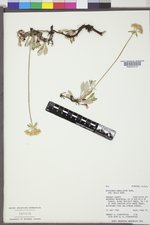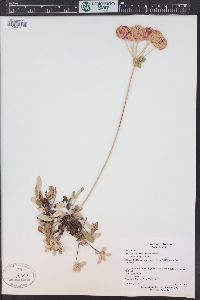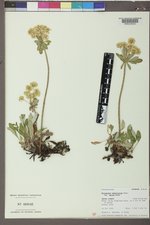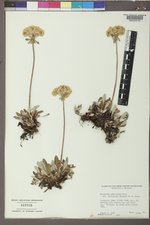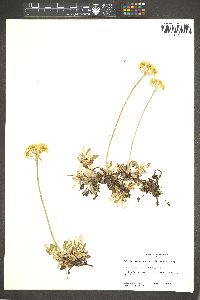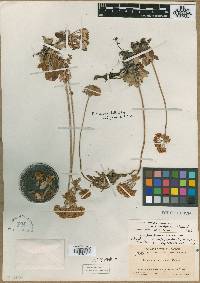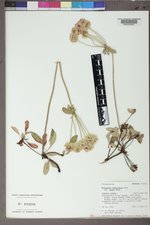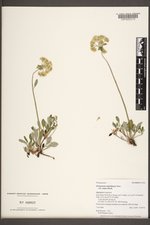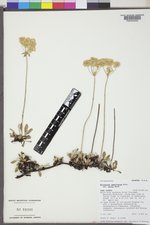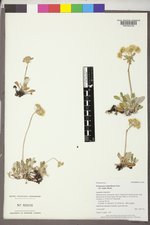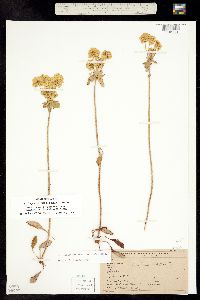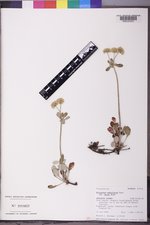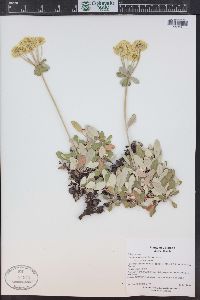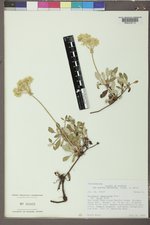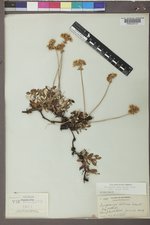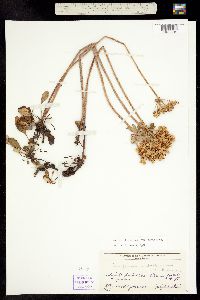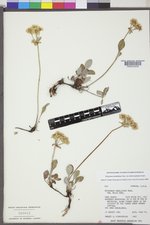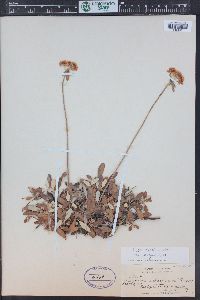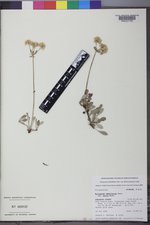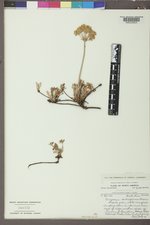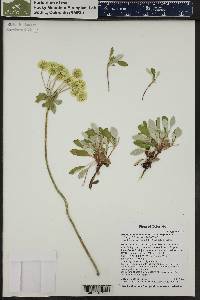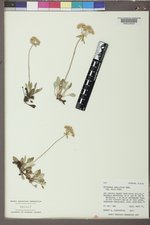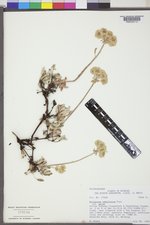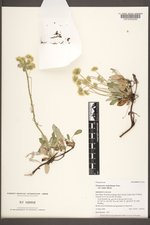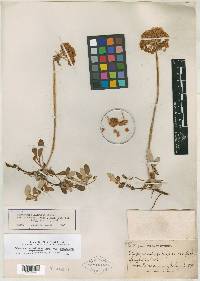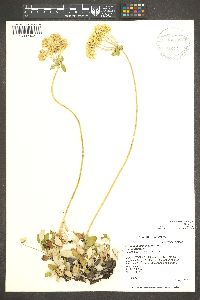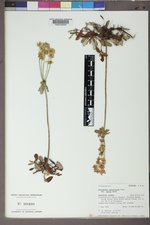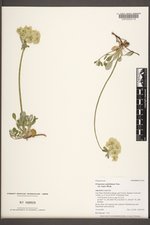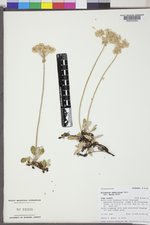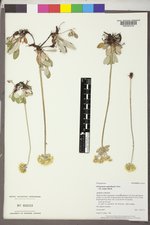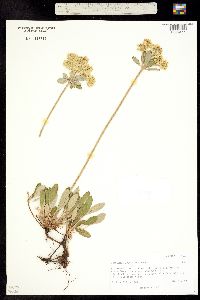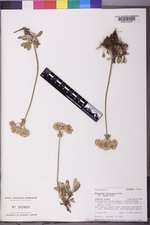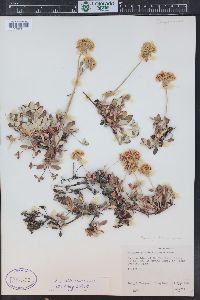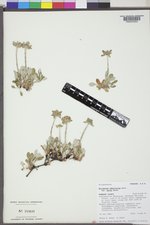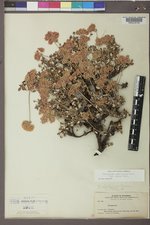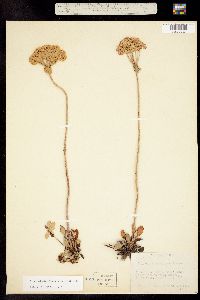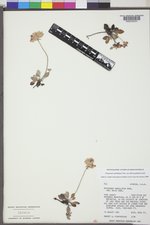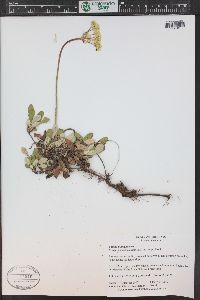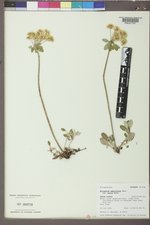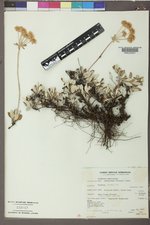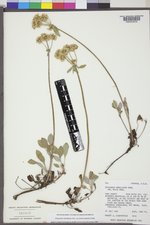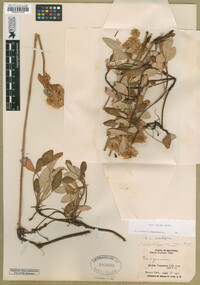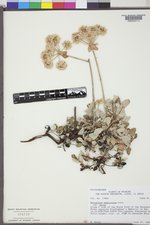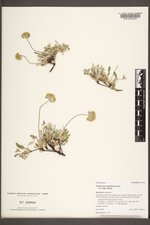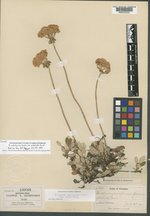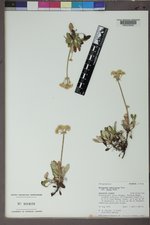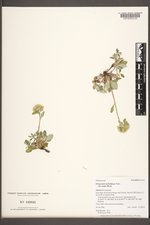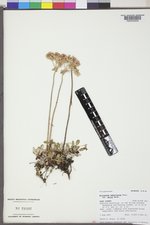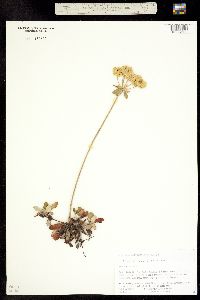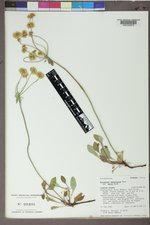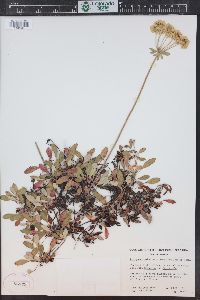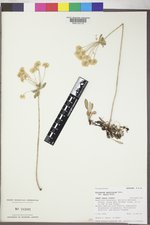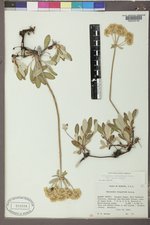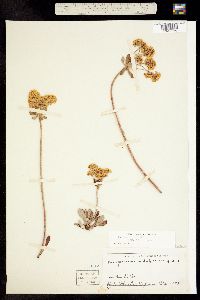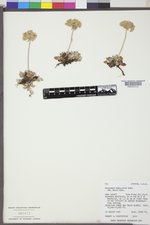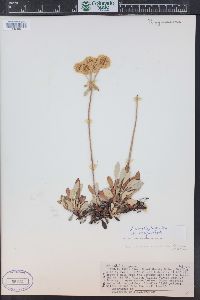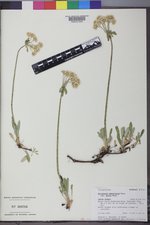Eriogonum umbellatum var. majus
|
|
|
|
Family: Polygonaceae
[Eriogonum heracleoides var. subalpinum, moreEriogonum subalpinum Greene, Eriogonum subalpinum var. stenophyllum , Eriogonum subalpinum var. subnivale , Eriogonum umbellatum subsp. majus , Eriogonum umbellatum var. subalpinum M.E.Jones] |
Herbs, prostrate to spreading, compact mats, 1-4.5(-5) × 2-8(-10) dm. Aerial flowering stems erect, 1.5-3 dm, usually floccose, without one or more leaflike bracts ca. midlength. Leaves in loose rosettes; blade oblanceolate to elliptic, (0.3-)0.5-2(-4) × 0.3-1(-1.5) cm, densely whitish-, greenish-, or reddish-lanate abaxially, glabrous and olive green to bright green adaxially, margins plane. Inflorescences umbellate; branches (2-)3-9 cm, usually floccose, without a whorl of bracts ca. midlength; involucral tubes 2-3.5 mm, lobes 1-4 mm. Flowers 3-7(-9.5) mm; perianth cream. 2n = 76. Herbs, prostrate to spreading, compact mats, 1-4.5(-5) × 2-8(-10) dm. Aerial flowering stems erect, 1.5-3 dm, usually floccose, without one or more leaflike bracts ca. midlength. Leaves in loose rosettes; blade oblanceolate to elliptic, (0.3-)0.5-2(-4) × 0.3-1(-1.5) cm, densely whitish-, greenish-, or reddish-lanate abaxially, glabrous and olive green to bright green adaxially, margins plane. Inflorescences umbellate; branches (2-)3-9 cm, usually floccose, without a whorl of bracts ca. midlength; involucral tubes 2-3.5 mm, lobes 1-4 mm. Flowers 3-7(-9.5) mm; perianth cream. 2n = 76. Flowering Jun-Sep. Sandy to gravelly flats, slopes and ridges, mixed grassland and sagebrush communities, oak, aspen, and montane to subalpine conifer woodlands, mountain meadows, or in alpine tundra; (800-)1200-2800(-3500) m; Alta., B.C.; Colo., Idaho, Mont., Utah, Wash., Wyo. Flowering Jun-Sep. Sandy to gravelly flats, slopes and ridges, mixed grassland and sagebrush communities, oak, aspen, and montane to subalpine conifer woodlands, mountain meadows, or in alpine tundra; (800-)1200-2800(-3500) m; Alta., B.C.; Colo., Idaho, Mont., Utah, Wash., Wyo. Variety majus is widespread and common in the Rocky Mountains. These plants are often locally common in Idaho and northern Utah, but they are rather rare in the Cascade Range of Washington. The high-elevation plants in Washington are often markedly different from similarly situated Rocky Mountain plants, having smaller leaves and flowers, and tighter, more compact, umbellate inflorescences. Variety majus is widespread and common in the Rocky Mountains. These plants are often locally common in Idaho and northern Utah, but they are rather rare in the Cascade Range of Washington. The high-elevation plants in Washington are often markedly different from similarly situated Rocky Mountain plants, having smaller leaves and flowers, and tighter, more compact, umbellate inflorescences. Variety majus is distinct from and often grows with var. umbellatum in Colorado, leading many local taxonomists to distinguish the two at species rank. In Wyoming and Montana, however, var. majus occasionally is difficult to differentiate from var. dichrocephalum. Variety majus often occurs with Eriogonum heracleoides, and mixed collections occasionally are encountered. Care must be taken in the herbarium to differentiate the narrow-leaved E. heracleoides var. leucophaeum from the broader-leaved E. umbellatum var. majus, although the two do not grow together. Variety majus is distinct from and often grows with var. umbellatum in Colorado, leading many local taxonomists to distinguish the two at species rank. In Wyoming and Montana, however, var. majus occasionally is difficult to differentiate from var. dichrocephalum. Variety majus often occurs with Eriogonum heracleoides, and mixed collections occasionally are encountered. Care must be taken in the herbarium to differentiate the narrow-leaved E. heracleoides var. leucophaeum from the broader-leaved E. umbellatum var. majus, although the two do not grow together.
|

